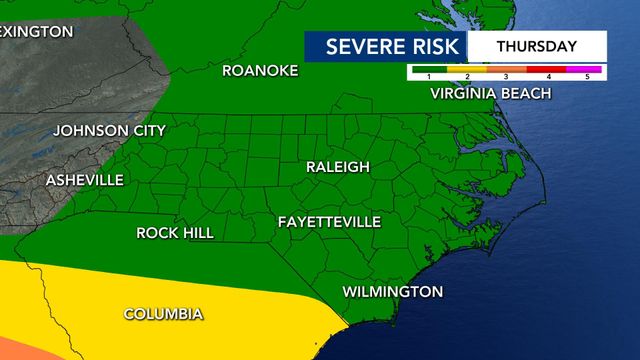How to talk to kids about tornado safety

Spring is here and with it comes the busy storm season. When it comes to keeping your family safe, it's paramount to make sure your kids are ready for a severe weather situation.
Some of the generalized guidelines about tornadoes apply to kids, but it's important to convey the severity of the situation without stressing them out. Tornadoes can form quickly and a non-threatening, cloudy day can turn daunting.
Getting ahead of any potentially dangerous situation can help ease kids' fears.
"We always teach kids to 'be prepared, not scared,'" said WRAL meteorologist Aimee Wilmoth. "So many kids are scared of severe storms. As long as you have a plan in place and know how to protect yourself during a warning, you should be ok."
Talk about what to do and develop a plan
Many kids will get an idea of what to do from their school as most North Carolina schools hold a tornado drill. This introduces the concept to kids and helps them understand what can happen.
Talk to kids about precautions and develop an emergency plan. Establish the safest place in your home (usually a windowless room near the center of the home) to take cover in.
Here is another good resource on tips to follow.
If possible, get to the lowest level of the building
"The number one thing everyone needs to remember when under a tornado warning is to get to the lowest level of the building that you are in," Wilmoth said.
A location like the center of a basement below ground level or the lowest floor of a house offers the greatest safety. A center hallway, bathroom or closest are also good options.

If reaching a low level isn't possible, try to get under a door frame or get up against something like a counter that will shield you from falling debris.
Know what a tornado is and how to follow one through media
Teach kids about the signs of a tornado - a roaring wind, funnel clouds and dark skies.
Explain that they can count on hearing about tornado warnings through their phone, radio and TV stations like WRAL News and FOX 50.

Any tornado warning in the area will mean WRAL News will be on-air on digital channel 5.1, WRAL News + and on the WRAL News app. You can also hear us on the radio on 101.5 FM. You can activate notifications on the WRAL app to be the first to know when a tornado warning has been issued.
"If we are under a tornado warning, you can bet someone from the WRAL Severe Weather Team will be live on WRAL," said WRAL meteorologist Aimee Wilmoth. "Take your phone with you when you get to your safe spot so that you can watch our coverage on the WRAL News App."
Practice a tornado drill
During severe weather preparedness week, many offices and school districts will plan a tornado drill. For schools, this sometimes means students go to a hallway and take cover against a wall, an important exercise in getting them comfortable with preparing. Students should stay away from areas like cafeterias, gyms, or auditoriums in these situations because they are less likely to withstand pressure from tornadoes.
You can conduct a family tornado drill and find the best place to take cover in your area. Go over and review this plan regularly for a variety of situations, including at home, school or in a car.
Create a tornado emergency kit
You can build an emergency preparedness kit for tornado situations. You can get kids to help you create one and gather things like:
- Unused batteries and battery-operated TV, radio, bottled water, personal hygiene items and non-perishable food
- Instructions for a tornado emergency plan
- Pack extra clothes for each family member
- Have a first aid kit handy
- A list of important contact information, including phone numbers
The National Weather Service has more guidance about building a kit here.
'When thunder roars, go indoors'
A good rule of thumb to follow is that if you can hear thunder, you are in danger of being struck by lightning and that's the best time to head inside, even though it may not be raining at the moment.
"If you can hear thunder, you are in danger of being struck by lightning," Wilmoth said. "I've seen it many, many times. We can have lightning strike several miles away from the actual rain. My daughter plays soccer and she's had coaches that let them play during thunder if it sounds far away. I always go to the coach and tell them that this isn't safe. The kids have to get to a shelter if they can hear thunder."
Have them help with recovery
If a tornado does significant damage to your home or general area, have kids help with the clean up or recovery effort if it's safe to do so. Helping someone will instill good habits, give them a lifetime memory and get them to understand how serious tornadoes can be. This will help be diligent about preparing for the next severe weather situation in their life.








